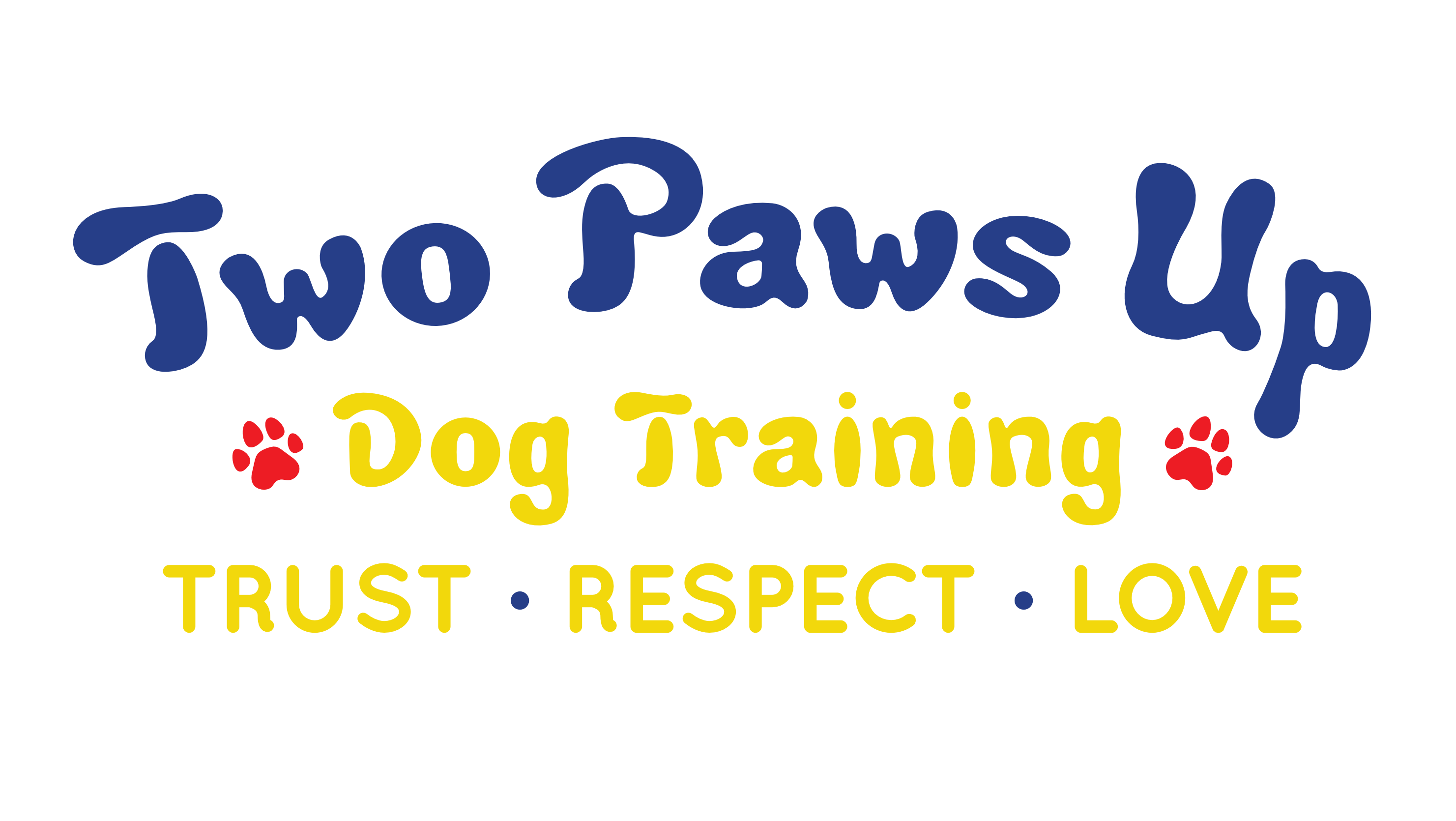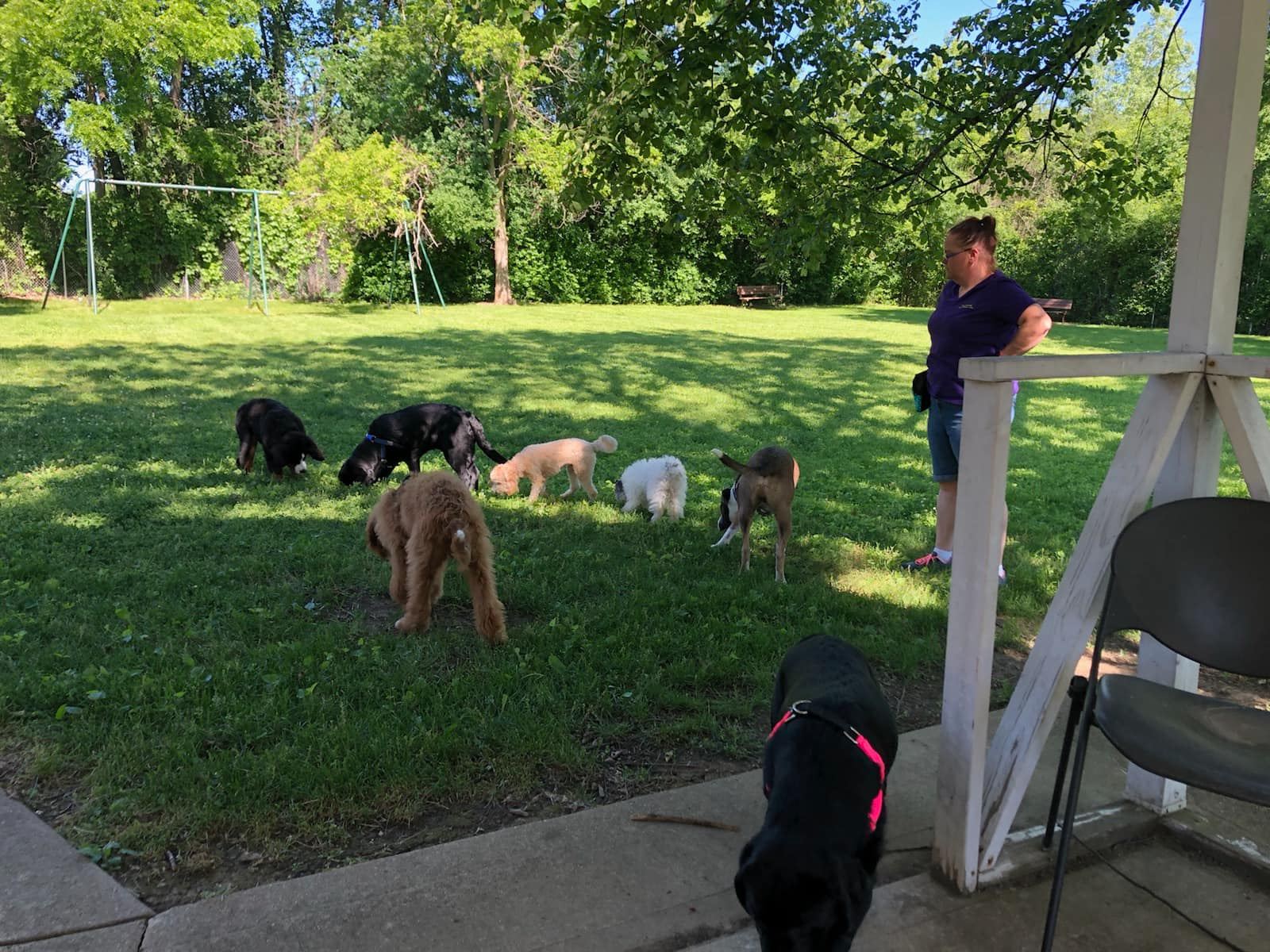Play, Socialization & Reactivity
What is Socialization?
Let’s start off with the formal definition:
Socialization (noun)
- the activity of mixing socially with others.
“socialization with students has helped her communication skills”
- the process of learning to behave in a way that is acceptable to society.
“preschool starts the process of socialization”
What does this mean for our dogs?
When we talk about canine socialization it is important to realize that it doesn’t look like human socialization. It’s not about putting a group of unfamiliar dogs together and having them interact.
Think about how you feel in a social situation with new, unfamiliar people. Are you excited to interact with everyone in the room and run right up to them to give them a hug? Do you hang back and observe from afar? Do you, like me, dread those situations altogether and would rather be anywhere but forced to be in that situation?
How are our dogs any different? There are outgoing social dogs who LOVE every dog they meet and rush up to them, many times very inappropriately, to say ‘hi’. However, those dogs are not the norm.
There are dogs who need to first feel out the situation and are then able to start to mingle finding one or two other dogs to interact with. This is actually the category that most dogs fall into.
There are dogs who are worried about the situation and hang out in the corner by themselves unsure what to do and try not to draw attention to themselves.
What is described above is the canine version of a cocktail party. Each dog, just like each of us, is unique in what they bring to that party in the way of social skills and desire to interact with other members of their own species. The difference is that when dogs don’t get along at the party there can be dire consequences.
I want my dog to play with other dogs!
While we may all love the idea of our dog playing with a bunch of other dogs at daycare or the dog park, there is are some things to consider.
Is your dog actually having fun?
Unless you have the “life of the party” dog, it can take a skilled eye and understanding of dog body language to know this for sure. Dogs communicate primarily via body language, being able to read that can be critical in a multi-dog environment (even in your own household).
Is this a safe environment for my dog?
Things can happen so quickly when a group of dogs are together. This is again where understanding what you are seeing in those subtle communications is key to keeping your dog safe. Who is supervising these interactions? Do they know what they are looking for? Are there enough people around should something go south quickly?
Why is that dog growling?
It cannot be said enough that dogs communicate in very different ways from humans (but then again not so different).
Take that dog that LOVES every other dog and rushes up to your dog from 50 yards out at the dog park. When that dog gets to your dog, he is wiggly and sniffing your dog nose-to-nose. Your dog turns his head away and that dog continues his grand introduction. Your dog growls and that dog continues to sniff and remains right in your dog’s face. Your dog snaps towards that other dog and finally the other dog backs up a few steps.
So, what just happened there in our human example is….
You arrive at the cocktail party and another person, whom you don’t know at all, runs right up to you and gives you a hug saying “it is so nice to meet you…”. You kindly say “Hi, who are you? Have we met?” as you take a step backwards. That person steps forward trying to embrace you again. You put your hand out and block them taking another step backwards. They try again and you push them away from you.
When we are in a situation that makes us feel uncomfortable, we will resort to escalated warnings and eventually react with some form of aggression if those attempts didn’t remove the real or perceived threat. The same is true with our dogs. These low-level warnings are often missed by the humans around. It is not until we hear the audible growl that it hits our radar. These warnings are the only way a dog has to communicate their inner feelings of fear or uncertainty and they should NEVER be punished or ignored.
What does this mean going forward?
If a dog is constantly subjected to the above scenario without proper supervision and/or intervention that dog may learn that the only way to stay safe in that situation is to escalate their response quicker. The next time a dog runs up to your dog, they may skip the step of turning away and go right to the growl. Ignoring normal dog communication, by humans or other dogs, is one way that reactivity and aggression can begin and escalate. This is why skilled eyes supervising dog-to-dog interactions is critical.
But my dog used to get along with every other dog…
By now, I hope you are beginning to see the parallels between us humans and our dogs. Dogs, just like humans, typically get along with everyone else as youngsters. Do you remember how easy it was to make friends as a young child? You could strike up a conversation with anyone.
As we mature, our circle of friends tends to get smaller and we like to hang out with the same group of people. The same is true of our dogs. As dogs mature, they tend to not want to meet every dog they pass on the street. They may not like the annoying, over-exuberant dog at the dog park. They may be fine with other dogs their own age or dogs they have grown up with.
Hormones can also play a huge role in the behavioral changes we see in dog-dog interactions as our dogs mature. Both male and female dogs who are not spayed/neutered can have challenges interacting with other dogs of the same sex as they get closer to adulthood, around 2-3 years of age. This is of course very individual, and some un-altered dogs can interact perfectly well with each other.
However, we do tend to see some challenges as these dogs reach adolescence. We believe strongly that allowing dogs to have those hormones through development and into adulthood is beneficial for so many reasons, and we applaud the veterinary world in making the shift away from early spaying and neutering. However, this is something we want everyone to be aware of as your dog matures.
So, how should I socialize my dog?
If your dog truly enjoys playing with other dogs and it is properly supervised, play can be an excellent PART of socialization. It is important to remember that play is only a part of it and not the most important part.
What most of us truly want from our dogs is a dog who can go places with us and be around other dogs and behave (ie: not bark, lunge, pull on leash, etc.). Believe it or not, play is NOT the way to achieve that.
If your dog always gets to run up to every dog they meet from the time they are young puppies, that is what your dog will grow accustomed to. So, what happens as they get older, and they are not allowed to say “hi” to that other dog on their daily walk?
Typically, the dog will not understand why all-of-a-sudden they cannot go see that dog. As the dogs get closer together, your dog may get excited and pull on the leash lunging to try to get closer to that dog. Your dog may lay down and try to stay put so you cannot move them away. What you are seeing here is the beginning of “leash frustration”. It is your dog’s equivalent of saying “but I want to say hi. I always say hi”.
Repeating this over and over can increase your dog’s feelings of frustration when they see another dog on-leash. Over time, frustration can turn into more aggressive displays of reactivity.
What we want to do instead is have a plan to socialize our dogs. Some safe, supervised off-leash play is fantastic; however, we want our dogs to understand and earn that play and then be able to turn that excitement off and regain focus on us.
We also want our dogs to be able to handle that loud garbage truck passing by or the kid down the street riding their bike past. We want our dogs to be able to handle the spring thunderstorm and not hide inside shaking for 12 hours without going outside to potty. These are the other important parts of socialization that we often miss at a young age, when they are critical.
These are the pieces that will help create that well-rounded adult dog who you can take on everywhere and enjoy it!

